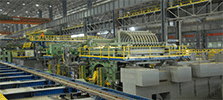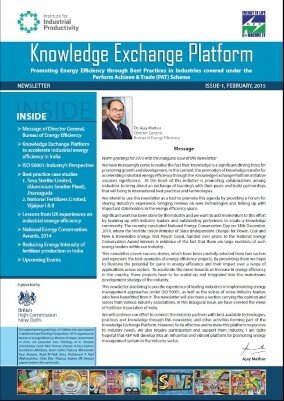Industrial Efficiency Best Practices
Best Practices are the effective tools to facilitate knowledge exchange on effective technology, energy management systems and efficient processes within the focus sectors. This database contains detailed case studies from the most energy intensive sectors in India viz. Aluminium, Cement, Chlor and Alkali, Fertilizers, Iron & Steel, Pulp & Paper, Textile and Thermal Power Stations, which reflects the best examples of the energy efficiency planning, project execution and thereby the numerous energy efficiency benefits achieved along with investment and payback period.
INDUSTRIAL EFFICIENCY BEST PRACTICES
|
Aluminium
Primary aluminium production follows two major processes first is refining of bauxite to alumina and second is smelting of alumina to aluminium. Smelting is an energy intensive process and consumes electrical energy, accounting for about 85%–90% of the electrical energy consumption.Aluminium sector has been categorized on the basis of their process….Read more |
Cement
There are about 148 large cement plants in the country with an installed capacity of 219.17 MTPA and more than 350 mini-cement plants with an estimated capacity of 11.1 MTPA, making the total installed capacity of 230.27 MTPA up to year 2009/10. Due to the demand in the past and recent growth of economy, the…Read more |
Chlor and Alkali
Chlor-alkali sector has been categorized on the basis of their process into two subsectors i.e. membrane based and mercury based. The total reported energy consumption of these designated consumers is about 0.88 million ton of oil equivalent/year. Specific energy consumption varies from 0.262to 0.997 toe/t of these 22 designated consumers…Read more |
Fertilizers
India is the world’s third largest producer of fertilizers and, as of 2013-14, it had an installed capacity of 127.67 lakh tonnes of nitrogen, and 62.08 lakh tonnes of phosphate nutrient. The actual quantities produced were 123.78 lakh tonnes of nitrogen and 37.14 lakh tonnes of phosphate. Production of nitrogen and…Read more |
Iron and Steel
Production of iron and steel is an energy intensive processes. At present, the specific energy consumption of large integrated Indian steel plants is 6.5–7.0 Gcal/ ton of crude steel as against the international norm of 4.5–5.5 Gcal/ton. Specific energy consumption varies from 0.0527 to 1.907 toe/t for the 67 designated..Read more |
Pulp & Paper
Industries in the Pulp & paper sector can be categorized on the basis of their Raw material into three subsectors i.e. Wood based ,Agro based, and Recycled fiber based (RCF). The total reported energy consumption of designated consumers in this sector is about 2.08 million ton of oil equivalent..Read more |
Textile
The textile industry in India can be classified into the organized sector and the decentralized/rural sector. The organized sector comprises mills, which include the spinning mill or the composite mill. The decentralized power-loom/hosiery and knitting sectors form the largest section of the textile industry. Energy cost in the textile industry..Read more
|
Thermal Power Stations
India is the sixth largest in terms of power generation. About 65% of the electricity consumed in India is generated by thermal power plants, 22% by hydroelectric power plants, 3% by nuclear power plants and rest 10% from other alternate sources like solar, wind, biomass etc. 53.7% of India’s commercial…Read more |


